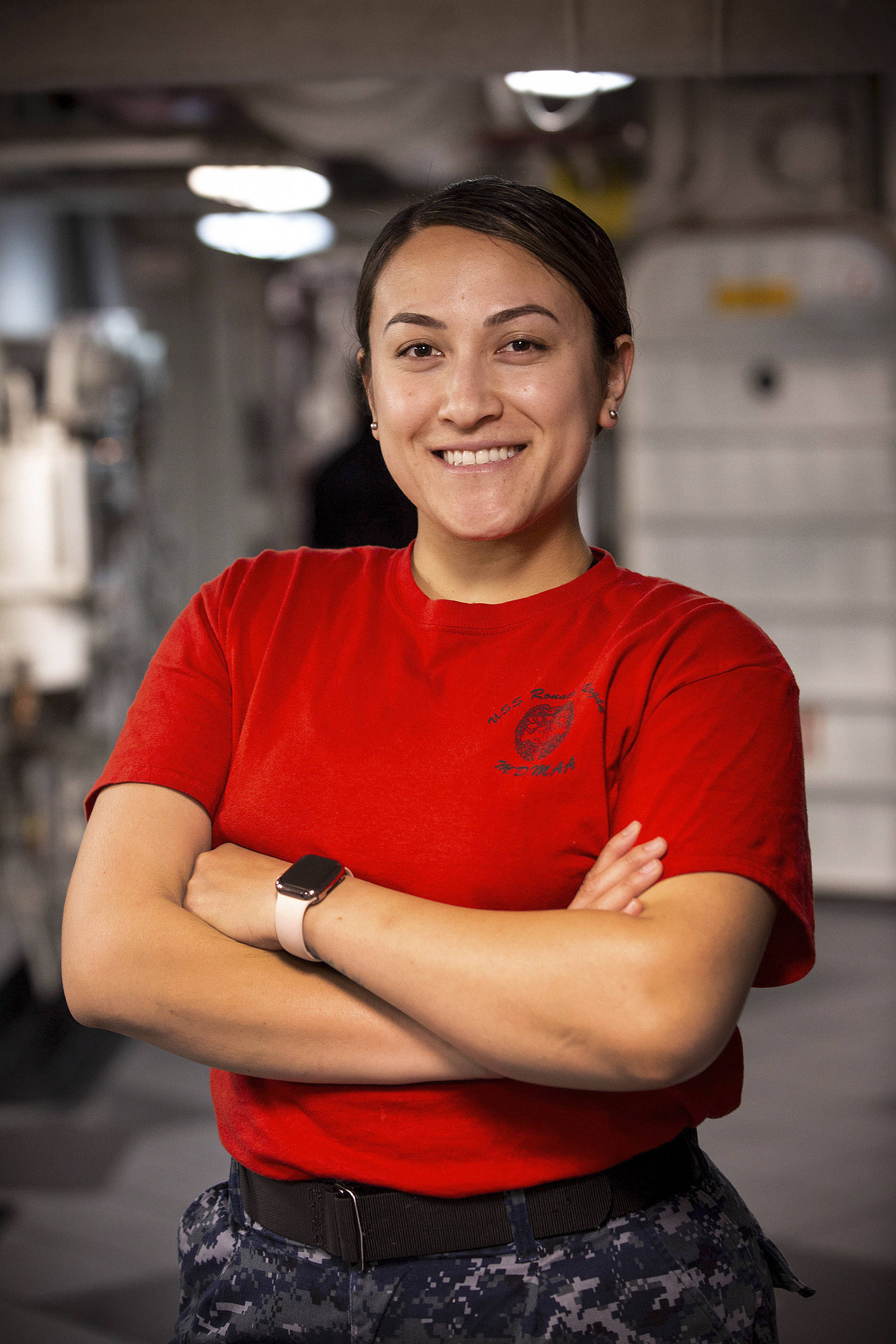By Mass Communication Specialist Robert Zahn,
Navy Office of Community Outreach
Petty Officer 3rd Class Erica Bechard, a native of Coupeville, wanted to join the Navy to travel.
Now, two years later and half a world away, Bechard serves aboard the aircraft carrier USS Ronald Reagan, patrolling one of the world’s busiest maritime regions as part of the leading-edge of U.S. 7th Fleet.
“It was a big adjustment from civilian life to come into the Navy and be stationed on a carrier,” Bechard said. “You learn to live a simple, minimalist life on the ship because you don’t have all those freedoms you have back home.”
Bechard, a 2007 graduate of Coupeville High School, is a mass communication specialist aboard the Yokosuka, Japan-based ship, the only forward-deployed aircraft carrier in the Navy.
“I do mainly video production and a little photography, but mostly video, which I love,” Bechard said.
Bechard credits success in the Navy to many of the lessons learned in Coupeville.
“My mom taught me to always put forth your best and work hard, to remember that it will all pay off in the end,” Bechard said.
U.S. 7th Fleet spans more than 124 million square kilometers, stretching from the International Date Line to the India/Pakistan border; and from the Kuril Islands in the North to the Antarctic in the South. U.S. 7th Fleet’s area of operations encompasses 36 maritime countries and 50 percent of the world’s population with between 50-70 U.S. ships and submarines, 140 aircraft, and approximately 20,000 sailors.
“The Navy is forward-deployed to provide security and strengthen relationships in a free and open Indo-Pacific. It’s not just the ships and aircraft that have shown up to prevent conflict and promote peace,” said Vice Adm. Phil Sawyer, commander, U.S. 7th Fleet. “It is, and will continue to be, our people who define the role our Navy plays around the world.”
USS Ronald Reagan is longer than three football fields, measuring nearly 1,100 feet. The ship, a true floating city, weighs more than 100,000 tons and has a flight deck that is 252 feet wide. Two nuclear reactors can push the ship through the water at more than 35 mph.
Sailors’ jobs are highly varied aboard the carrier. Approximately 3,200 men and women make up the ship’s crew, which keeps all parts of the aircraft carrier running smoothly — this includes everything from handling weapons to operating nuclear reactors. Another 2,500 men and women form the air wing responsible for flying and maintaining more than 70 aircraft aboard the ship.
Though there are many ways for sailors to earn distinction in their command, community and career, Bechard is most proud of completing mass communication specialist school.
“Between boot camp and A school, it was a very long time, like a year long,” she said. “The courses were challenging, but it felt good to be finished and start my career in Japan.”
As a member of one of the U.S. Navy’s most relied-upon assets, Bechard and other sailors know they are part of a legacy that will last beyond their lifetimes contributing to the Navy the nation needs.
“Serving in the Navy is a humbling and meaningful experience,” she said.


